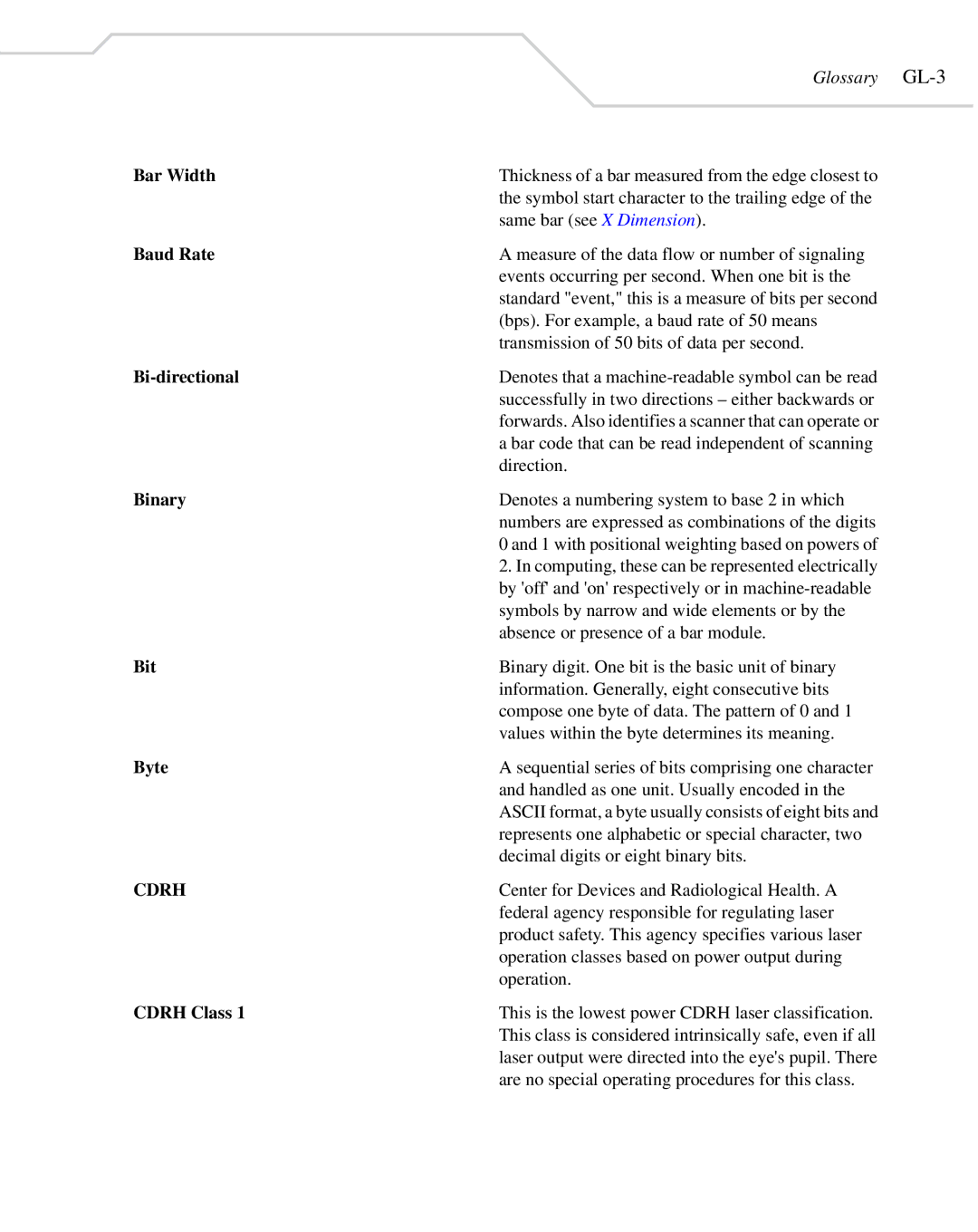
Glossary
Bar Width | Thickness of a bar measured from the edge closest to |
| the symbol start character to the trailing edge of the |
| same bar (see X Dimension). |
Baud Rate | A measure of the data flow or number of signaling |
| events occurring per second. When one bit is the |
| standard "event," this is a measure of bits per second |
| (bps). For example, a baud rate of 50 means |
| transmission of 50 bits of data per second. |
| Denotes that a |
| successfully in two directions – either backwards or |
| forwards. Also identifies a scanner that can operate or |
| a bar code that can be read independent of scanning |
| direction. |
Binary | Denotes a numbering system to base 2 in which |
| numbers are expressed as combinations of the digits |
| 0 and 1 with positional weighting based on powers of |
| 2. In computing, these can be represented electrically |
| by 'off' and 'on' respectively or in |
| symbols by narrow and wide elements or by the |
| absence or presence of a bar module. |
Bit | Binary digit. One bit is the basic unit of binary |
| information. Generally, eight consecutive bits |
| compose one byte of data. The pattern of 0 and 1 |
| values within the byte determines its meaning. |
Byte | A sequential series of bits comprising one character |
| and handled as one unit. Usually encoded in the |
| ASCII format, a byte usually consists of eight bits and |
| represents one alphabetic or special character, two |
| decimal digits or eight binary bits. |
CDRH | Center for Devices and Radiological Health. A |
| federal agency responsible for regulating laser |
| product safety. This agency specifies various laser |
| operation classes based on power output during |
| operation. |
CDRH Class 1 | This is the lowest power CDRH laser classification. |
| This class is considered intrinsically safe, even if all |
| laser output were directed into the eye's pupil. There |
| are no special operating procedures for this class. |
